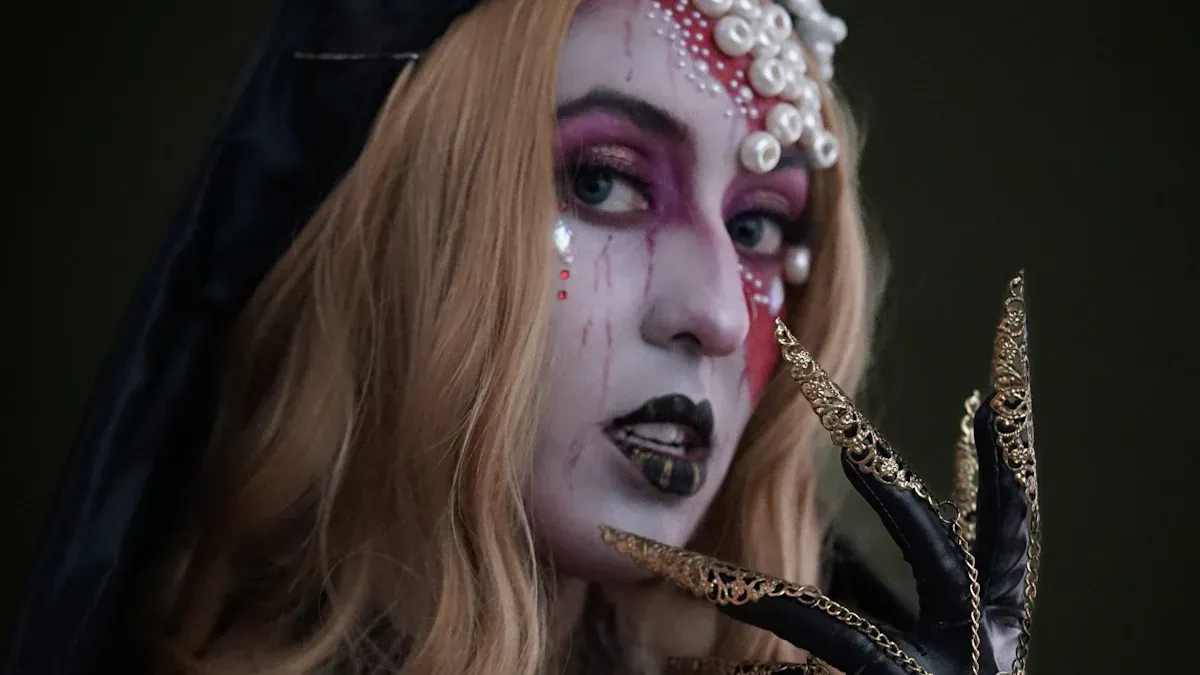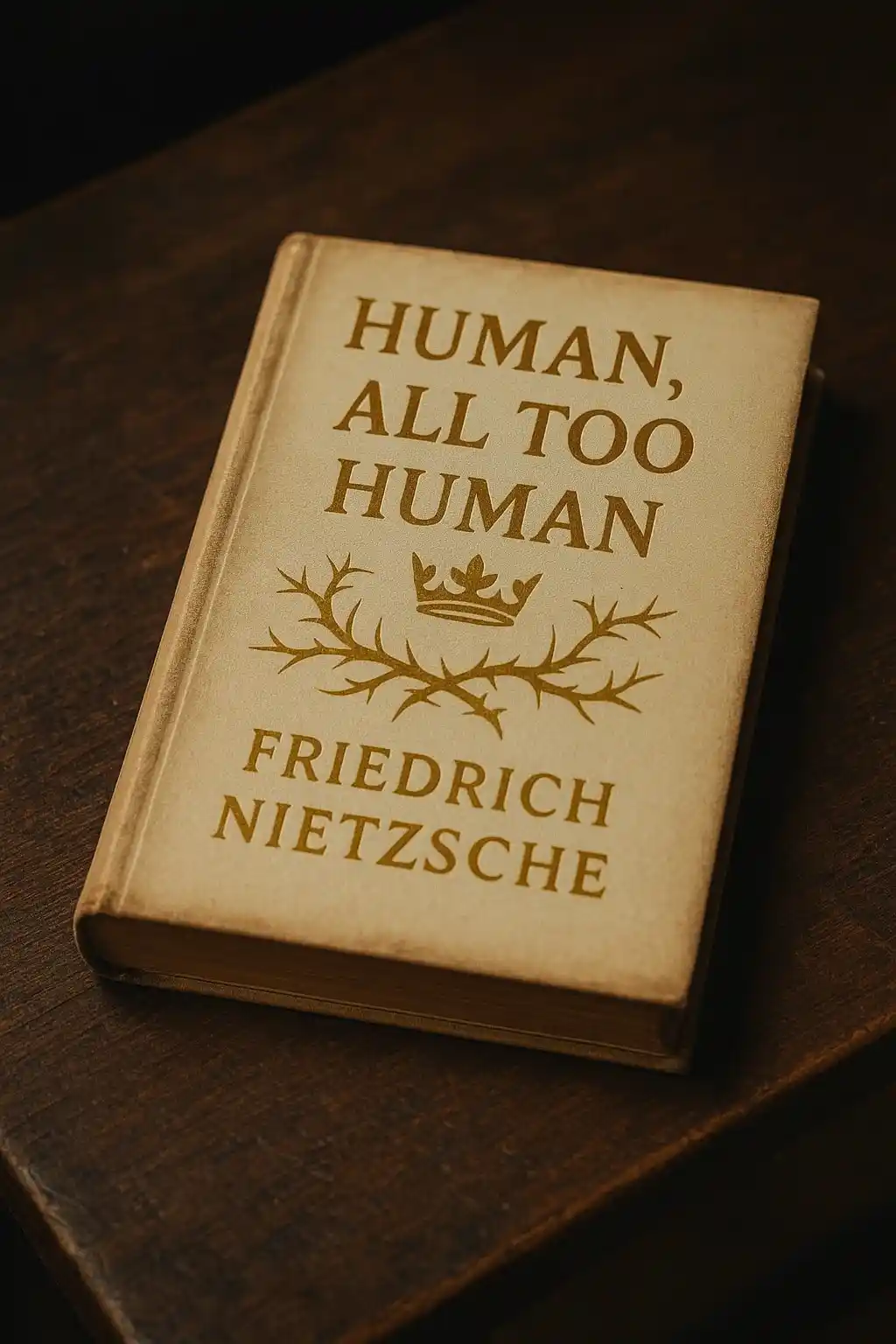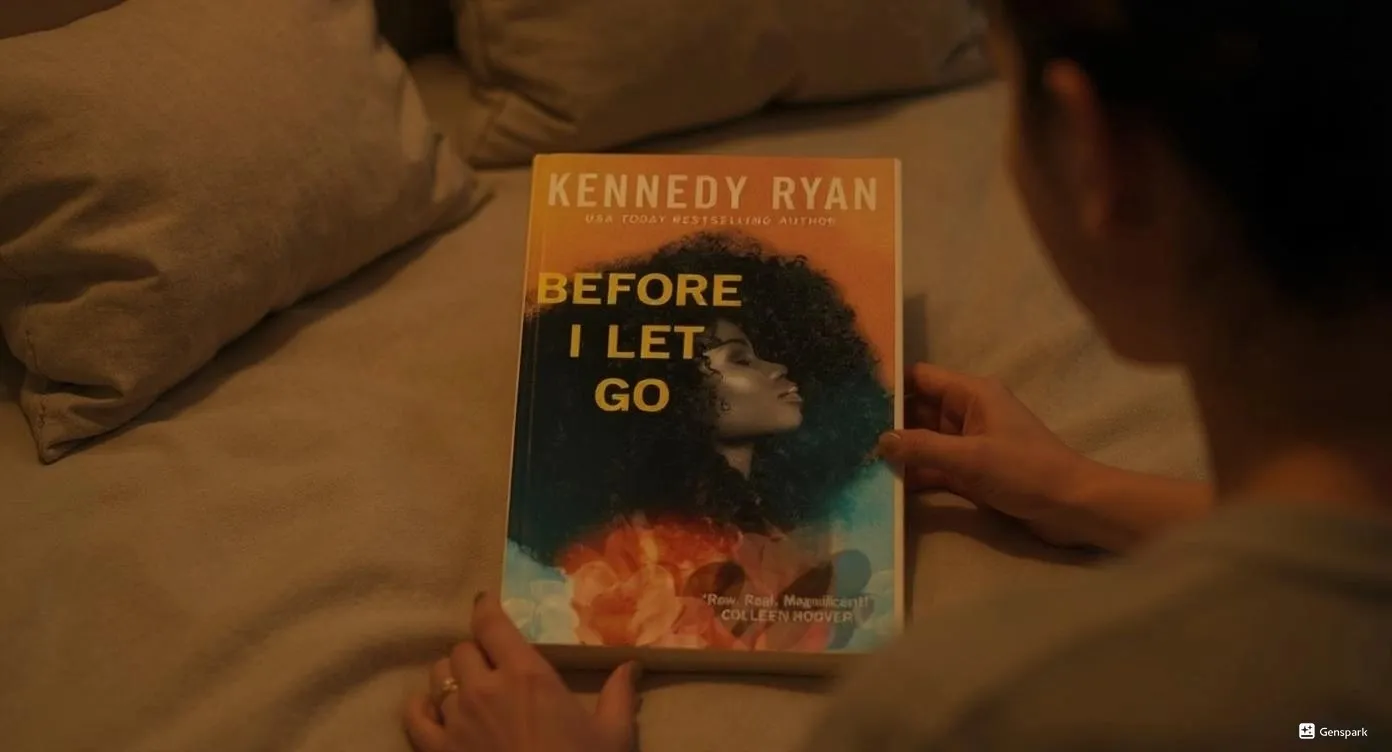I’ll be honest, The Other Side of Now by Paige Harbison surprised me. I tore through this coming-of-age story with Meg Bryan, an actress who finds herself tangled in magical realism and fresh heartbreak. If you love emotional reads with a hint of romance, this book feels like a cozy chat with old friends.
Key Takeaways
The book has a main character that feels real and easy to understand.
The character’s problems and changes seem honest and interesting.
Magical realism brings a new and believable idea to the story.
It makes the story deeper but does not make it hard to follow. This book is short and full of feelings.
It mixes funny parts with touching moments. It is great for people who like coming-of-age and romantic stories.
First Impressions
Overall Appeal
I have to confess, I read this book in one sitting. I ignored my phone, skipped dinner, and just kept flipping pages. The story pulled me in right away. Meg Bryan feels real, like someone I could text at midnight.
The mix of magical realism and everyday heartbreak made the book feel fresh. I laughed at Meg’s awkward moments and felt a lump in my throat during her lowest points. The writing style is easy to follow, but it still packs an emotional punch.
Who Should Read It
If you love books by Rebecca Serle or Taylor Jenkins Reid, you’ll probably enjoy this one. This story works best for readers who want a mix of romance, self-discovery, and a touch of magic. Teens and adults will both find something to relate to.
If you want a book that feels like a heart-to-heart with a friend, “The Other Side of Now by Paige Harbison Book Review” deserves a spot on your list.
The Other Side of Now by Paige Harbison: Plot Overview

Meg Bryan’s Journey
I have to admit, Meg Bryan’s story in The Other Side of Now by Paige Harbison pulled me in right away. Meg is an actress, but her life feels stuck. She’s lost her spark, and her best friend Aimee is gone. I felt her sadness and confusion. The book doesn’t just tell you Meg is hurting—it shows you. I could almost feel the weight on her shoulders.
One night, Meg wakes up in a world that isn’t hers. Suddenly, Aimee is alive again. Meg gets a second chance to fix things, but nothing comes easy. She has to face her own choices and regrets. I saw her struggle with grief, friendship, and what it means to move forward. The story doesn’t rush through these moments. Instead, it lets Meg’s feelings breathe. I found myself rooting for her, even when she made mistakes.
“Meg’s journey feels real. She’s messy, honest, and sometimes lost. I saw pieces of myself in her.”
A review I read pointed out how Meg’s journey is about more than just magic. It’s about facing pain and learning to live again. The book explores friendship, loss, and the hope that comes from second chances. If you’ve ever wished you could go back and fix something, you’ll get Meg.
Here’s how the story unfolds:
Meg’s life hits a low point after losing Aimee.
She wakes up in an alternate reality where Aimee is still alive.
Meg tries to reconnect and fix their friendship.
She faces tough choices about who she wants to be.
The story blends sadness, hope, and a little bit of magic.
I noticed the author uses both what Meg says and how she says it to show her feelings. The tone shifts from sad to hopeful, and the story moves from decline to progress. This made Meg’s journey feel honest and layered.
Alternate Realities
The Other Side of Now by Paige Harbison uses alternate realities in a way that feels both magical and believable. Meg doesn’t just time travel or dream—she actually lives in a world where things are different. This twist adds a fresh layer to the story. I liked how the book didn’t get lost in complicated rules. Instead, it focused on how Meg reacts to this new world.
Other books and stories have played with alternate realities, too. Epic tales like the Iliad use different storylines to show what could have happened. Modern books use imagined worlds to ask big questions about life and choices. In this book, the alternate reality isn’t just a trick. It’s a way for Meg to see her life from a new angle.
I found the idea of “what if” both chilling and comforting. The story lets Meg—and the reader—explore how one change can shift everything. The writing style keeps things clear and emotional. I never felt lost, even when the story jumped between worlds.
“The magic in this book isn’t about spells or potions. It’s about the chance to heal and try again.”
The blend of magical realism, romance, and emotional storytelling makes The Other Side of Now by Paige Harbison stand out. The book doesn’t just ask if Meg can fix her past. It asks if she can forgive herself and find a new way forward.
Themes and Genre
Magical Realism
I love how The Other Side of Now by Paige Harbison uses magical realism. The story feels real, but then something impossible happens, and everyone just goes with it. That’s the magic. I never felt confused or pulled out of the story. The magic fits right in, like it belongs. Here’s a quick look at what makes magical realism work in this book:
Description | |
|---|---|
Cultural Hybridization | Mixes different cultures and ideas, showing both tension and harmony. |
Bending of Time | Time moves in strange ways, letting Meg see her life from new angles. |
Personal and Familial Themes | Explores love, loss, and family, making the magic feel personal. |
Genre Distinctions | The magic feels normal, not flashy or explained, which sets it apart from fantasy or sci-fi. |
Narrative Techniques | The story blends magic into real life, and the characters accept it as part of their world. |
Grief and Identity
Grief in this story hit me hard. Meg’s pain after losing her best friend felt raw and honest. I saw how grief can change who you are. The book shows that grief is not just sadness. It’s a mix of shock, emptiness, and even confusion. Sometimes, Meg tries to hold on to the past. Other times, she wants to let go. This struggle shapes her identity.
I read that grief is different for everyone. There are no rules or stages. Some people keep a bond with the person they lost. That bond can help them heal and find comfort. In Meg’s case, her journey through grief changes how she sees herself and her future. The story made me think about how loss can break you, but also help you grow.
Writing and Style
Tone and Humor
I noticed right away that Paige Harbison’s writing has a playful, honest vibe. The book doesn’t take itself too seriously, even when things get tough for Meg. I found myself laughing at Meg’s awkward moments and her dry, sometimes sarcastic, sense of humor. The tone reminded me of authors who mix comedy with real life, like Sheila Heti.
Critics have pointed out how this style feels a bit like stand-up comedy—funny, but with a point. The book uses wry humor and a bit of irony, which made Meg’s voice feel fresh and real. I never felt like the jokes were forced. Instead, the humor helped me connect with Meg, especially when she was struggling.
Emotional Impact
This story hit me in the gut more than once. I felt Meg’s sadness, hope, and confusion. Academic research backs up how stories like this can really move readers. Here’s what I noticed:
Stories can change how we feel and think, even after we finish reading.
Fiction helps us understand other people’s feelings and lives.
Emotional shifts in a story make us care more about the characters.
Readers often share their feelings about books with friends, which makes the story stick.
Books like this can even help us become more empathetic.
Strengths
I sat on my couch, snacks forgotten, phone buzzing in the background. I just wanted to see what Meg would do next. That’s rare for me these days.
Here’s what stood out:
Relatable main character: Meg feels like someone I know. She messes up, laughs at herself, and tries again. I saw myself in her awkward moments.
Magical realism that works: The magic in this story feels natural. It never gets confusing or silly. I just accepted it, and it made Meg’s journey more interesting.
Emotional honesty: The book doesn’t hide from tough feelings. Grief, regret, hope—they all show up. I found myself nodding along, thinking, “Yeah, I’ve felt that.”
Quick pacing: I never got bored. The story moves fast, but not so fast that I felt lost. I finished it in one night.
Humor and heart: Even when things got heavy, the book made me smile. Meg’s voice is funny and real.
Weaknesses
I have to admit, I sometimes get so caught up in a story that I ignore the flaws until I finish. With this book, I found myself racing through pages, but a few things kept nagging at me.
Some scenes felt rushed. I wanted more time with Meg and Aimee. The story jumped ahead when I craved a deeper look at their friendship.
Side characters faded fast. I kept forgetting names or why certain people mattered. The focus stayed on Meg, but the world around her felt thin.
The plot lost steam in the middle. I hit a few chapters where I wondered if anything big would happen next. The pacing stumbled, and I started checking how many pages were left.
Emotional moments sometimes lacked punch. I wanted to feel more, but the writing skimmed over big feelings.
The magical realism felt underexplained. I accepted the alternate reality, but I never got a sense of the rules or why it happened.
I noticed some reviews struggle with the same issues—no clear thesis, jumping from point to point, or making judgments without enough examples. That kind of structure can leave readers confused or unsatisfied. I saw a bit of that here, too. The story sometimes felt like a summary instead of a deep dive.
Character Development

Meg Bryan’s Growth
Meg Bryan stands out as a dynamic character in The Other Side of Now by Paige Harbison. I watched her start as someone lost and stuck, weighed down by grief and regret. She isn’t just the protagonist—she’s the heart of the story.
Her actions drive the plot and show her personality shifts. I noticed how Meg’s choices, like reaching out to Aimee or facing her own mistakes, reveal her stubbornness and hope. She doesn’t stay the same. She grows, stumbles, and learns.
“Meg’s journey feels honest. She messes up, but she keeps trying. That’s what made me root for her.”
Here’s how I saw her development:
Meg begins as someone who avoids her pain.
She faces tough moments that force her to reflect.
Her inner struggle with guilt and longing shapes her decisions.
By the end, Meg accepts her past and finds a new sense of self.
This arc reminded me of how stories use rising action and conflict to push characters forward. Meg’s growth felt real, not forced. I could see her thinking, doubting, and finally changing.
Supporting Cast
The supporting cast in this book didn’t always get the spotlight, but they still mattered. Aimee, Meg’s best friend, plays a huge role in Meg’s journey. I wanted more depth from some side characters, but the ones who stood out helped Meg face her fears. Each friend or family member showed a different side of Meg. Their actions and words pushed her to grow, even if they faded into the background at times.
Aimee: The anchor for Meg’s grief and hope.
Family: Gave glimpses of Meg’s past and what she’s lost.
Friends: Offered moments of comfort or challenge.
I wish the book had spent more time on these relationships. Still, the cast supported Meg’s story and helped her transformation feel believable.
Comparison and Reflection
For Fans of Rebecca Serle and Taylor Jenkins Reid
I always look for books that give me the same feeling as my favorites. If you love Rebecca Serle or Taylor Jenkins Reid, you probably want stories with emotional twists, realistic characters, and a bit of magic or what-if. I get it—about 70% of readers do the same thing. We want to know if a new book fits with what we already enjoy.
Here’s how The Other Side of Now stacks up:
Tone and Style: The book keeps things light, even when Meg faces tough moments. It doesn’t get too heavy or too sweet. I noticed the humor and honesty reminded me of Serle’s In Five Years and Reid’s Maybe in Another Life.
Characterization: Meg feels messy and real, not perfect. She makes mistakes and owns them. That’s something I always look for in this genre.
Themes and Tropes: The story uses magical realism, but it never gets confusing. The “what if” idea runs through the whole book, just like in Serle’s and Reid’s novels.
Narrative Evolution: The plot moves fast, but sometimes skips over deeper moments. I missed the slow-burn build I get from Taylor Jenkins Reid.
Originality: The book doesn’t copy its inspirations. It brings its own voice, even if it sometimes feels a bit rushed.
Key Takeaways:
Similar vibe to Serle and Reid
Relatable, flawed main character
Magical realism used well
Fast pacing, sometimes too quick
Great for fans of emotional fiction
Meg’s story felt honest and raw.
Perfect for fans of emotional, coming-of-age reads.
I’d rate it a 7/10—worth picking up if you want a quick, heartfelt escape.
Sip The Unknown—Discover Stories You Never Knew You’d Love!
Dionysus Reviews Has A Book For Every Mood
Biography & Memoir
Fiction
Mystery & Detective
Nonfiction
Philosophy
Psychology
Romance
Science Fiction & Fantasy
Teens & Young Adult
Thriller & Suspense
Frequently Asked Questions
Is The Other Side of Now a good pick for book clubs?
I think so! The book sparks real talk about grief, friendship, and second chances. My group had a lot to say about Meg’s choices.
Does the story have a happy ending?
I won’t spoil it, but I felt a mix of hope and sadness at the end. The ending felt honest, not forced.
Can teens read this book?
Yes, teens can read it. The language stays clean. The themes fit both young adults and grown-ups. I’d hand it to my niece.









